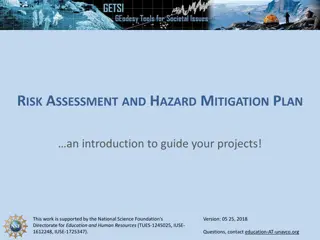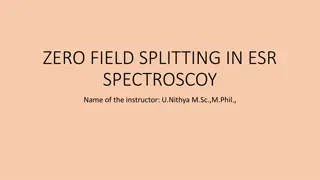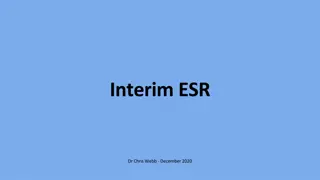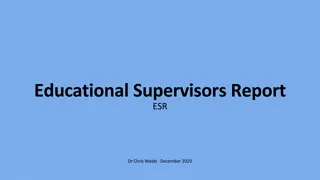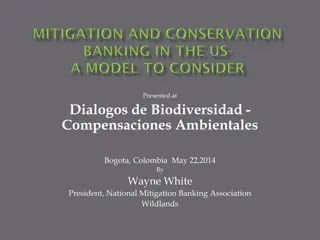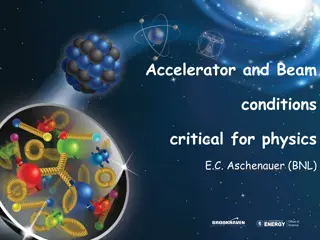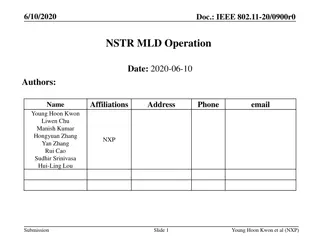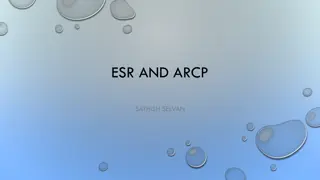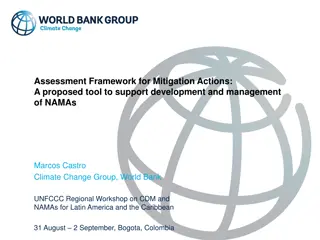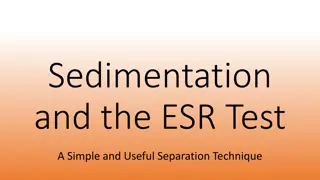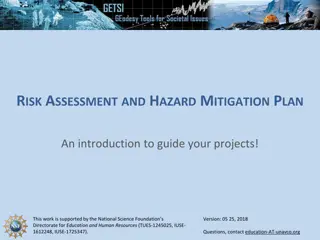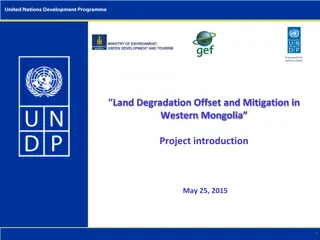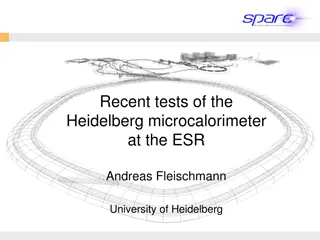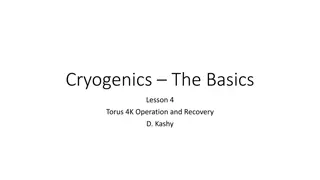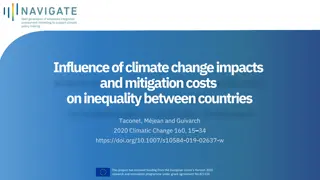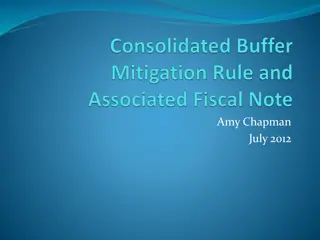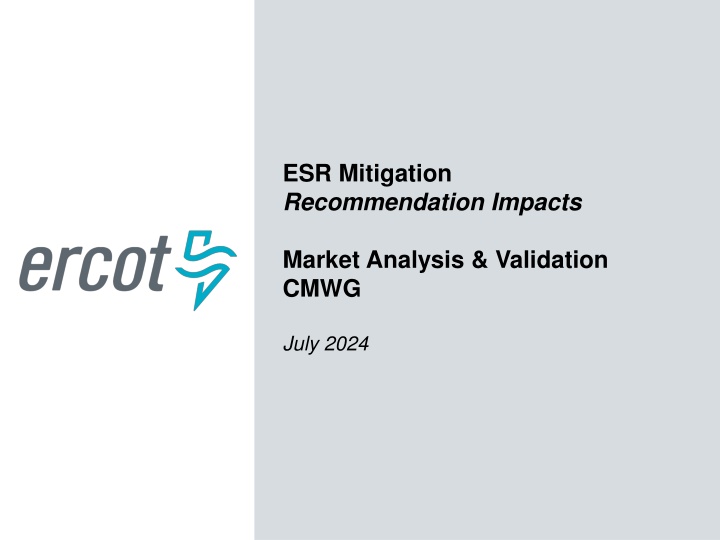
Mitigation Framework Review and Proposal Updates
Explore the latest updates on ESR mitigation recommendations and their impacts on the market analysis. Dive into proposed refinements, system lambda considerations, and a revised mitigation proposal for a balanced approach to ESR support.
Download Presentation

Please find below an Image/Link to download the presentation.
The content on the website is provided AS IS for your information and personal use only. It may not be sold, licensed, or shared on other websites without obtaining consent from the author. If you encounter any issues during the download, it is possible that the publisher has removed the file from their server.
You are allowed to download the files provided on this website for personal or commercial use, subject to the condition that they are used lawfully. All files are the property of their respective owners.
The content on the website is provided AS IS for your information and personal use only. It may not be sold, licensed, or shared on other websites without obtaining consent from the author.
E N D
Presentation Transcript
ESR Mitigation Recommendation Impacts Market Analysis & Validation CMWG July 2024
Recap: ESR Mitigation ERCOT and CMWG have been reviewing the concept of a Just-in-time mitigation framework with a Mitigated Offer Cap (MOC) derived as a function of a Resource s shift factor and the shadow price cap of a given constraint when the resource has been flagged for mitigation by the Competitive Constraint Test (CCT). Subsequent slides include proposed additional refinements and supportive analysis for discussion. Addition of System Lambda from Step 1 into MOC calculation Clarity around how MOC will be applied to multiple constraints 2 PUBLIC
Additional Refinements Previous MOC formula did not account for System Lambda Could lead to potential over-mitigation when System Lambda is high Propose to use System Lambda from SCED Step 1, also known as the Reference System Lambda Similar to approach contemplated for MOC of RMRs under NPRR 826 Where a ESR has been flagged for mitigation and more than one constraint exists, ERCOT proposes to use the lowest absolute value of constraint contributions Additional refinements meant to support a balanced approach which avoids risk of over-mitigation 3 PUBLIC
Revised Mitigation Proposal Just-in-time We consider the constraints an ESR can help by at least -0.2 (those that have a more negative shift factor). We find the lowest highest contribution factor (-1 * max constraint shadow price * shift factor). The ESR MOC is lowered from the SWCAP to the min max contribution factor plus the SCED Step 1 System Lambda, or Reference System Lambda, minus one cent. Note that these MOC changes can only impact SCED results if the ESR is flagged in the SCED CCT process. 4 PUBLIC
System Lambda Need In hypothetical example: System Lambda = $3,000/MWh Resource has a significant helping shift factor on a non-competitive constraint Mitigated Offer Cap (MOC) should include the system-wide scarcity pricing. 5 PUBLIC
There is a strong correlation between the Step 1 System Lambda and System Lambda (Step 2) 6 PUBLIC
Most intervals are unaffected when we take the minimum vs maximum constraint contribution 8 PUBLIC
Analysis Methodology The table shows how often each mitigation strategy would impact SCED An interval is considered impacted if the dispatch differs by at least 0.1 MW between the original EOC and the EOC mitigated by the different proposals using the production LMP for both. This will tell us how often SCED would be impacted but would not show the correct dispatch. We could only determine the actual MW dispatch difference by rerunning SCED. The case studies involve SCED reruns 9 PUBLIC
Mitigation impacts Greatest daily mitigation (hours) Unique SCED intervals Mitigated over 1 hour Unique Resources Resource- intervals Proposal Previous Just-in-time 358 14 581 12 2.4 Just-in-time 284 11 439 5 2.6 10 PUBLIC
Mitigated intervals 12 PUBLIC
Case Study: SCED interval 2023-03-25 20:05 BRP_PBL1_UNIT1 (and BRP_PBL2_UNIT1) CROSSETT_BES1 (and CROSSETT_BES2) CATARINA_BESS 13 PUBLIC
Mitigation Case Study: BRP_PBL1_UNIT1 Mitigated Offer Cap = 910.26 = 681.8 + 228.46 -0.243 shift factor on constraint with a max shadow price of $2,800/MWh $228.46 Reference System Lambda 4750 3750 Step 2 EOC - original Dispatch - original Step 2 EOC - mitigated Dispatch - mitigated 2750 Price ($/MWh) 1750 750 -250 0 5 10 Break Point (MW) 15 PUBLIC
Mitigation Case Study: CROSSETT_BES1 No mitigation. No constraints met -0.2 threshold. 4750 3750 2750 Price ($/MWh) Step 2 EOC Dispatch 1750 750 -250 -10 40 90 Break Point (MW) 16 PUBLIC
Mitigation Case Study: CATARINA_BESS Mitigated Offer Cap = 1,188.55 = 960.10 + 228.46 -0.274 shift factor on constraint with a max shadow price of $3,500/MWh $228.46 Reference System Lambda 4750 3750 Price ($/MWh) 2750 Step 2 EOC - original Dispatch - original Step 2 EOC - mitigated Dispatch - mitigated 1750 750 -250 -2 3 8 Break Point (MW) 17 PUBLIC
Case study comparison: SBE2ASH8 TURTLECK_WCRYS_1 impact Original Just-in-time Shadow Price ($/MW) 2,800 2,118.22 Violation (MW) 0.93 0 18 PUBLIC
Takeaways Just-in-time This strategy mitigates resources when the ability to abuse market power due to local market conditions exists. This is the goal of mitigation in ERCOT. There was only one instance in 2023 when a resource was mitigated over 2 hours in a day using this strategy. 19 PUBLIC
Discussion 20 PUBLIC


